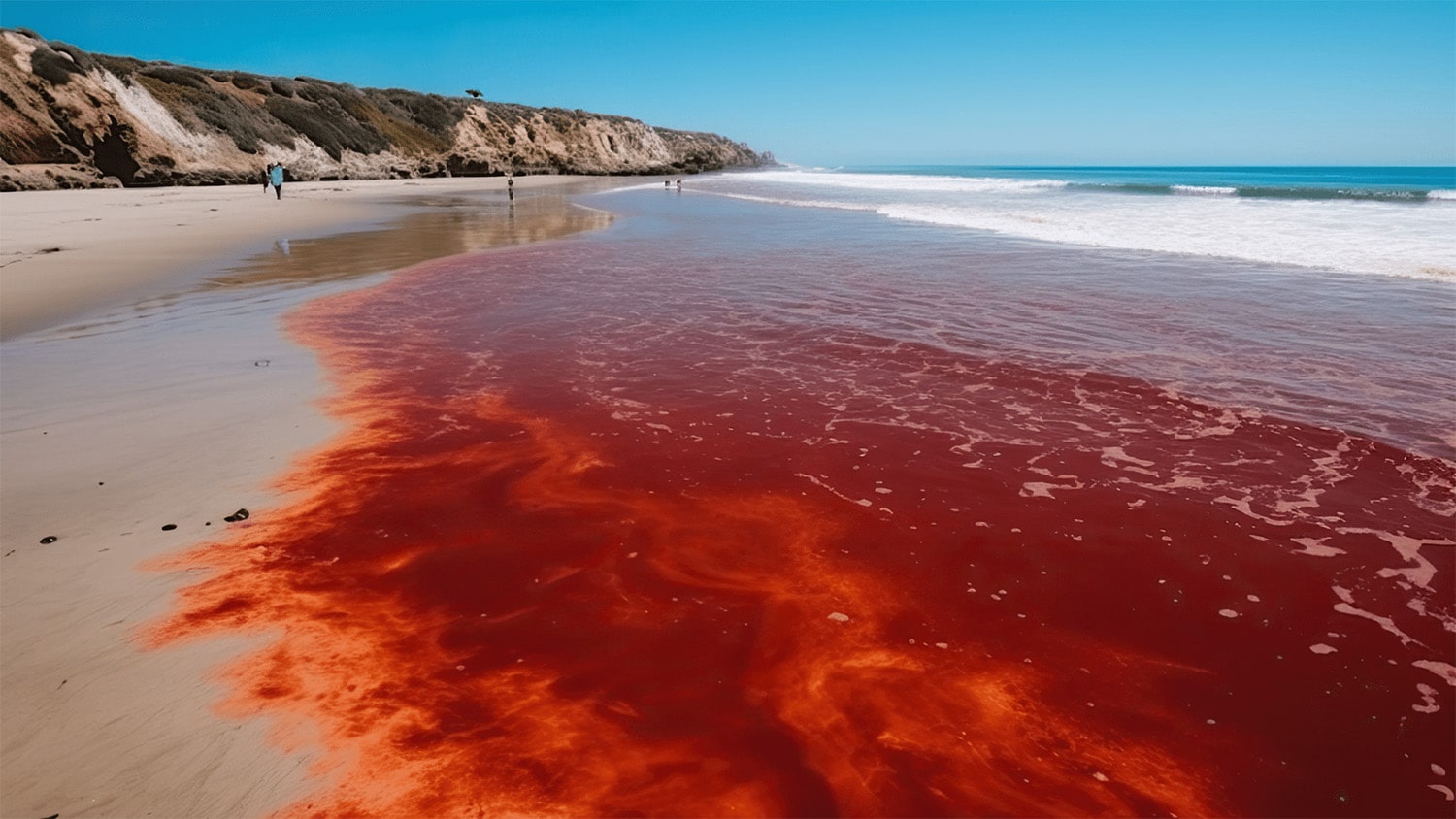
23 interesting facts about Red tides
- 👁️ 282
Red tides are natural phenomena that have intrigued and concerned humans for centuries. These events, characterized by the discoloration of coastal waters, are often a sign of complex ecological changes happening beneath the surface. Although the term “red tide” may conjure images of blood-red oceans, the actual colors can range from pink to deep red, depending on the organisms involved and environmental conditions. Red tides are not only a fascinating subject for marine biologists but also a crucial area of study for environmental scientists looking to understand the impacts of these blooms on ecosystems, human health, and the economy. Here are 23 interesting and informative facts about red tides that highlight their importance and the challenges they pose.
- Red tides are caused by the rapid growth and accumulation of certain microscopic algae, primarily dinoflagellates.
- These algae blooms can produce toxins harmful to marine life, birds, and mammals, including humans.
- Not all red tides are harmful or produce toxins, but the distinction is crucial for public health and safety.
- The coloration of the water during a red tide event is due to the pigments in the algae cells reflecting sunlight.
- Red tides have been documented for centuries, with early reports dating back to the Spanish explorers in the 16th century.
- These phenomena occur worldwide, from the Gulf of Mexico to the coasts of Australia and beyond.
- The frequency and intensity of red tides may be increasing due to factors such as climate change and nutrient runoff from agriculture.
- Red tide toxins can accumulate in shellfish, making them dangerous for human consumption.
- Respiratory irritation in humans can occur when toxins from red tides become airborne.
- Fish kills are a common consequence of red tides, leading to significant losses for local fisheries.
- Red tides can deplete the oxygen in the water, creating “dead zones” where marine life cannot survive.
- The economic impact of red tides includes losses in tourism, fisheries, and healthcare costs related to illness.
- Red tides are not always red; they can also appear brown, green, or even purple, depending on the species of algae involved.
- Some red tide algae species are bioluminescent, causing the water to glow blue at night.
- Monitoring and forecasting red tides involve satellite imagery and water sampling to predict blooms.
- There is no effective way to control red tides on a large scale, though small-scale treatments are being researched.
- The Florida Red Tide organism, Karenia brevis, is one of the most well-known red tide-causing algae.
- Traditional Chinese medicine documented red tides as early as 300 AD.
- Red tides can disrupt the marine food chain, affecting species from plankton to large marine mammals.
- Cleanup efforts after a red tide can be costly and require the removal of large amounts of dead fish from beaches.
- Some red tide events have lasted for months, significantly impacting marine environments and communities.
- Research into red tides includes studying their potential uses, such as the development of new medications.
- Public education campaigns are critical for informing communities about the risks and precautions associated with red tides.
Red tides are a striking reminder of the complex interactions within marine ecosystems and the delicate balance affected by natural and human-induced changes. While they can be beautiful and awe-inspiring, red tides pose significant challenges that require ongoing research and management efforts to mitigate their impact. Understanding red tides is essential for protecting marine life, ensuring public health, and sustaining the economic well-being of coastal communities affected by these events.
Red tides are natural phenomena that have intrigued and concerned humans for centuries. These events, characterized by the discoloration of coastal waters, are often a sign of complex ecological changes happening beneath the surface. Although the term “red tide” may conjure images of blood-red oceans, the actual colors can range…